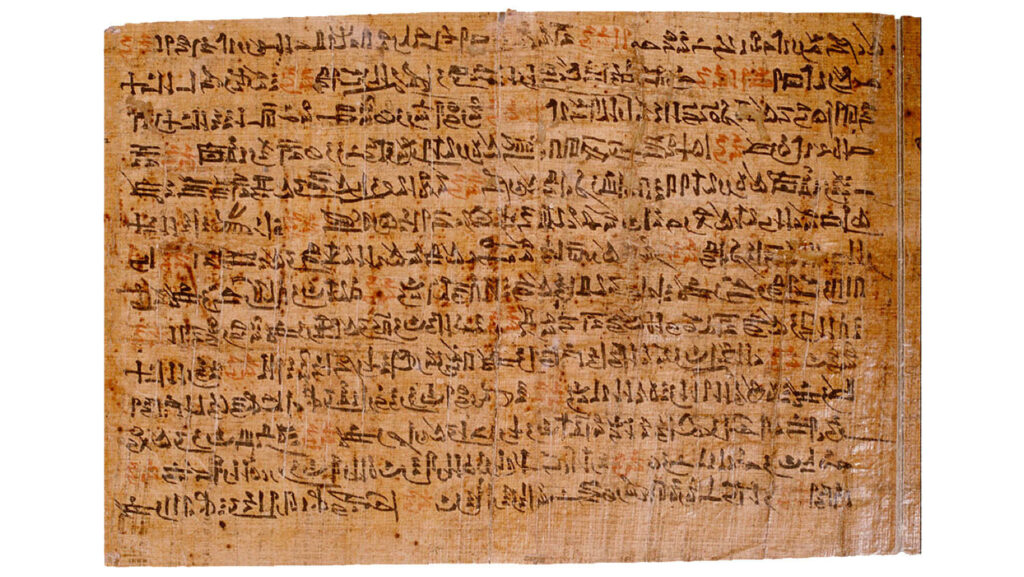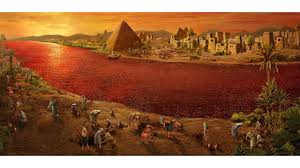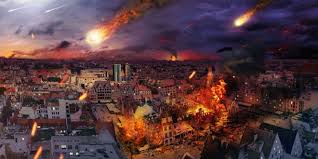To many, the biblical account of the 10 plagues and the Exodus is just too fantastical to be believed– pure legend discovered just within the pages of the Bible, Israelite propaganda with no archeological evidence. However what if it isn’t? What if there was an Egyptian eyewitness account of the divine consequences and suffering explained in the Bible?
Introducing the Ipuwer Papyrus.

The Ipuwer Papyrus is a very long scroll written in heiratic text, dating to circa 13th century b.c. It is understood to be a copy of an earlier work. Nevertheless, when the original was composed is a mystery. Dating is simply uncertain, commonly ranging from the early 2000s to the 1500s b.c. (the latter end of the spectrum more directly lines up with the biblical date for the Exodus).
The Ipuwer Papyrus was composed by a royal Egyptian scribe of the very same name. He mentions a long story of outright catastrophe befalling Egypt. Lots of references throughout the papyrus are noticeably comparable to the biblical account of the 10 plagues.
Here we employ a translation supplied by Rabbi Mordechai Becher of OHR Somayach a Jewish Bible school.
River of blood (First plague).
Bible: Exodus 7:20 describes God turning the water of the Nile river into blood and the Egyptians being not able to consume the water and required to dig wells trying to find drinkable water (Exodus 7:24).
Ipuwer papyrus: “The river is blood. Men shrink from tasting– human beings, and thirst after water.” (Ipuwer 2:10).

Animals diseased (Fifth plague).
Bible: Exodus 9:3 records that God struck the livestock and all the animals of Egypt with a sickness.
Ipuwer papyrus: “All the animals, their hearts weep. Cattle moan …” (Ipuwer 5:5). Then in 9:2 -3 it states, “Behold, cattle are left to stray, and there is none to gather them in.”.
Human afflictions (Sixth plague).
Bible: God judged Egypt with a contagious boil that broke out into open injuries. It not just struck men and women, however animals too (Exodus 9:8 -9).
Ipuwer papyrus: “Plague is throughout the land. Blood is everywhere” (IP 2:5 -6).
Enormous hail and thunder-storm (Seventh plague).
Bible: A huge hail storm demolished the herbs (Exodus 9:24 -25) and flax and barley crops which were close to harvest (Exodus 9:31 -32).
Ipuwer papyrus: It mentions crop failure that impacted the Egyptian earnings. “Lower Egypt weeps … The whole palace is without its incomes. To it belong wheat and barley, geese and fish” (IP 10:3 -6). It additionally reads, “Forsooth, grain has actually died on every side” (IP 6:3). It likewise compares the weariness of the land to the “cutting of flax,” that would occur with a massive hail storm (IP 5:12).

Lightning and fire.
The Bible: Associated with this huge storm was lightning that rolled along the ground. Fire was combined with the hail (Exodus 9:23 -24).
Ipuwer papyrus: Speaks of damage due to fire. “Forsooth, gates, columns and walls are consumed by fire” (IP 2:10).
Darkness over the land (Ninth plague).
Bible: Exodus 10:22 states that a tremendous darkness covered the land for 3 days.
Ipuwer papyrus: “The land is without light” (IP 9:11).

Death of the firstborn (Tenth plague).
Bible: The last plague included the killing of the first-born of every household, involving the Pharaoh’s (Exodus 12:29 -30). The Bible states a great cry was heard throughout Egypt (Exodus 12:30).
Ipuwer papyrus: “Forsooth, the children of the princes are dashed against the walls.” (IP 4:3, 5:6) “Forsooth, the children of princes are cast in the streets” (IP 6:12). “He who places his brother in the ground is everywhere” (IP 2:13) and “It is groaning through the land, mingled with lamentations” (IP 3:14).
Transfer of wealth from the rich to the slaves.
Bible: Now the sons of Israel had actually done according to the word of Moses, for they had requested from the Egyptians articles of silver and articles of gold, and clothing; 36 and the Lord had given the people favor in the sight of the Egyptians, so that they let them have their request. Thus they plundered the Egyptians. (Exodus 12:35 -36 NASV).
Ipuwer papyrus: “Gold and lapis Iazuli, silver, malachite, carnelian and bronze … are fastened on the neck of female slaves” (3:2).
The Ipuwer Papyrus is an artifact of hot dispute. Many think it to be simply a make-believe account, although still a literary work of art. Others believe it might have been somewhat based upon a genuine catastrophe. Of course these people could not relate to the Exodus account, because that too (according to the experts) is unproven fiction!